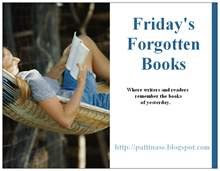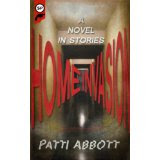
Christa Faust in a bed of books.
Robin Burcell, an FBO-trainsed forsensic artist is the author of the Anthony Award winning SFPD Homicide Inspector, Kate Gillespie novels, which include Every Move She Makes and Cold Case. Her upcoming novel Face of a Killer debuts this month.
,e of
 -trained forensic artist, has worked in law enforcement for
-trained forensic artist, has worked in law enforcement forThe DEATH IN...books by M.M. Kaye. DEATH IN CYPRUS,
DEATH IN KENYA, etc., etc. I love this series, and
I think it may very well have been the
beginning of my love of mysteries.( Agatha Christie fans
who have not yet read Kaye's series may very well find
a hidden gem.) Though but a handful of books in the series,
each story takes a trip to a far away land, bringing intrigue
into exotic settings. Kaye's characters are excellent,
no cardboards here. (But then she is a master, having
penned the wonderful historicals of SHADOW OF THE MOON
and THE FAR PAVILLIONS. Unfortuntately, the ultra
success of the latter two novels, IMHO, have caused her excellent mystery
series to be overlooked. Lucky for any new readers, the books have been
reprinted within the last five years, so are relatively easy to find.
Dana Kaye is a freelance writer and book critic based in Chicago. Her work has
appeared in the Chicago Sun-Times, Time Out Chicago, Crimespree Magazine,
Curve Magazine, Windy City Times and others. Her short story, “Running Back”
is featured in a new anthology, SIN.
For reviews, writing advice and other musings, check out her blog: http://www.danakaye.com/
THE PERKS OF BEING A WALLFLOWER, Stephen ChboskyPublished by MTV Books/Pocket Books
February, 1999
When asked to review a forgotten book, I immediately thought back to high school.
And if there was one book that completely defined my high school experience
(and many people’s high school experiences) it’d be PERKS. Told through letters to
a nameless recipient, Charlie’s story is both humorous and heartbreaking, universal
and unique. He’s a smart kid with minimal social skills, who, in high school, finally
finds a small group of friends, ones that listen to punk music and attend The Rocky Horror Picture Show.
As Charlie goes on first dates, smokes first cigarettes, learns secrets about his family and secrets
about his friends, he documents everything in the letters. Chbosky’s writing is honest, unapologetic,
and is perhaps the most truthful look at the most traumatic and influential time in a kid’s life:
Freshman Year.
Edward Pettit is a freelance book reviewer whose reviews have appeared in publications such as The Philadelphia Inquirer, the Chicago Tribune and the Philadelphia City Paper. He had written extensively on George Lippard and Edgar Allan Poe, instigating the so-called Poe Wars. Find him at http://omnigatherum.com/
THE QUAKER CITY, or the Monks of Monk Hall by George Lippard.
In the Fall of 1844, a young Philadelphia journalist, George Lippard, began a weekly serial
in the one of the city's newspapers. The story, entitled The Quaker City; or, the Monks of Monk Hall, was such a hit that when published became the best-selling novel in America until until Harriet Beecher Stowe's Uncle Tom's Cabin.
The Quaker City is a chaotic novel, set in Philadelphia in 1842. It's sprawling,
sensationalistic plot hinges on the evil denizens of a secret club, The Monks of Monk Hall,
who gather every night in a decrepit mansion in the Southwark section of the city.
But inside the walls of this house lurk all the horrors of the modern age. Vice and crime, rape and murder are perpetrated on a nightly basis. Monk Hall contains a tower and has three levels
below its ground floor, including a crypt, and, deepest of all, a dark pit, into which bodies
fall through trap doors, never to be seen again. Lippard takes all of the conventions of the
gothic novel, all of them— a decaying castle/mansion chock full of secret, labyrinthine passages,
trap doors and underground pits for prisoners, cackling torturers, sorcerers, innocent damsels
about to be ravished, evil "monks"— but doesn't give them the usual medieval setting for a gothic novel. Instead, he drops them right down in the midst of an urban Philadelphia in 1842.
Characters not only plot murder and are, in turn, murdered, but even the living walk
around with death-like visages, pallid lips, vacant stares, driven mad by the madness
that spirals around them. Philadelphia is a city of night, under a sky of doom.
Lippard writes about “Death-Angels, sent forth to dip their raven wings in blood.”
And then there is Devil-Bug, the monstrous porter of Monk Hall, a huge, misshapen,
troll-like man, who guards the door and the secrets of the club. Lippard paints him as a
vivid grotesque creation of "Satanic majesty" with a Quasimodo-like face, prodigious strength and wicked cunning. No one fools Devil-Bug and few survive his wrath.
The central plot of the novel concerns the rape of a young society girl, Mary, by a rich ne'er do well of the city, Gustavus Lorrimer. Lippard based this story on a sensational murder that had electrified the city just a year before, in 1843. Mahlon Heberton, a young man from a wealthy family in Philadelphia, had seduced (the 19th century euphemism for rape) another young girl of a reputable family, Sarah Mercer. When Sarah's brother, Singleton, found out, he hunted Mahlon down, finally catching him on a ferry escaping to Camden. Mercer fired four shots
at Heberton; the first probably killed him. The trial of Singleton Mercer made news across the country; it was a blockbuster media event of its time. And most surprising is that Mercer was acquitted of all charges. Such was the heinousness of Heberton's crime against Sarah, the jury found Mercer justified in taking action.
Lippard changes the names of the protagonists in his novel, but the bare bones of the story
are the same and his audience recognized the players in The Quaker City. However, Lippard
hasn't created a simple story of good guys and bad guys dueling over a pretty damsel in distress. His heroine continues to love her seducer, even after she has been disgraced and scorned by him. The brother in the novel is complicit in his own sister's seduction (although he doesn't know her identity at first) and has himself
The Quaker City was well-read, but also sorely criticized as lascivious, lurid entertainment,
the pornography of its day. And truth be told, Lippard never misses an opportunity to describe
a naked, heaving, snowy bosom, the more plump the better. According to one critic in 1849,
Lippard was either a "constellated lamp of learning" or a "brilliant satellite of sin." Lippard saw himself as the a firebrand, exposing corruption of all stripes, was branded the corrupting influence.
At the center of The Quaker City, Devil-Bug, who has been beset for years by hallucinations
of his murder victims, has a dream-vision, a waking-dream of the apocalypse. He envisions the city of Philadelphia in the far-off, future year of 1950, in which he stands in the ruins Independence Hall. A monstrous royal palace is rising next to it. The greed, corruption and vice have slowly created a Sodom of Philadelphia. A fleet of coffins come floating down the Delaware River, the corpses rising in them to point their accusing fingers at the city before clashing together in a thunderous naval bone-battle. The earth trembles, blood flows in the streets, the dead rise from their graves and all is lost.
Crime and zombies? You can’t beat that.
More forgotten books:
Terrie F. Moran
Charles Gramlich
Chris
Kerrie Smith
Bill Crider
Martin Edwards
Paul Bishop
James Reasoner
David Cranmer
Gary Dobbs
Lesa Holstine
Barrie Summy
Ali Karim
Chris Knopf















4 comments:
Always some good suggestions here Patti.
Don't forget me . . .
http://bishsbeat.blogspot.com/2008/11/forgotten-books-casca-eternal-mercenary_28.html
Some great forgotten books here.
Some great reminders here, it's amazing what can roll into the forgotten.
Logan Lamech
www.eloquentbooks.com/LingeringPoets.html
Post a Comment